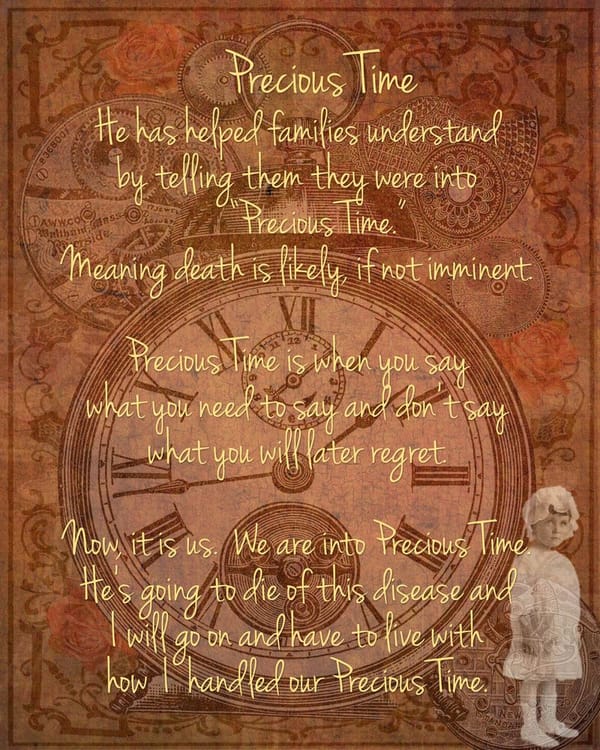Educating Patients and Families on the Benefits of Palliative Care: A Guide for Healthcare Professionals

Chronic illnesses such as cancer, heart failure, and chronic obstructive pulmonary disease (COPD) are life-altering diagnoses that bring not only physical symptoms, but also emotional, psychological, and spiritual challenges. While curative and life-prolonging treatments are often prioritized in care plans, a powerful and often underutilized complement—or alternative—is palliative care.
For healthcare professionals, one of the most impactful interventions isn’t just the treatments we prescribe, but the conversations we initiate. Educating patients and families about palliative care can drastically change the course of illness management and help foster more meaningful, values-based care.
What is Palliative Care – and Why Should We Be Talking About It Sooner?
Many patients and families equate palliative care with “giving up.” As clinicians, it is our responsibility to reframe this narrative. Palliative care is *not* about surrendering—it’s about supporting. It is a multidisciplinary, patient-centered approach that enhances quality of life by alleviating symptoms, reducing suffering, and addressing the emotional, social, and spiritual needs of patients and their families.
And importantly, palliative care can be introduced at any stage of a chronic illness—not just at the end of life. Whether used alongside active treatments or when curative options have been exhausted, palliative care provides value throughout the illness trajectory.
Why Patients With Chronic Illnesses Need Palliative Care
Patients with conditions like cancer, heart failure, and COPD frequently experience complex symptom burdens: pain, fatigue, dyspnea, anxiety, and depression. These not only affect physical function but also erode emotional resilience, social connection, and hope.
Palliative care offers tools to mitigate these effects. Here's how:
In Cancer:
- Pain control and symptom relief: Whether from disease progression or side effects of treatments like chemotherapy or radiation, symptoms such as nausea, fatigue, and breathlessness are common. Palliative care teams specialize in symptom management using both pharmacologic and non-pharmacologic strategies.
- Emotional support: From diagnosis to survivorship or terminal stages, cancer patients often face existential distress. Palliative care brings in psychosocial support to ease that burden.
In Heart Failure:
- Managing breathlessness and fatigue: Palliative interventions, such as opioids for dyspnea or diuretics for volume overload, can drastically improve comfort.
- Preventing frequent hospitalizations: Through home-based palliative services and better symptom control, patients experience fewer acute care visits.
- Advance care planning: Heart failure can have a fluctuating course; early discussions about goals of care provide clarity when decisions need to be made.
In COPD:
- Support for respiratory distress: Techniques like supplemental oxygen, pulmonary rehab, and medications are complemented by education and counseling to reduce panic during breathlessness episodes.
- Reducing isolation and anxiety: COPD patients often suffer from social withdrawal and depression. Palliative care helps them reconnect through emotional support, community services, and therapeutic engagement.
How to Educate Patients and Families: A Step-by-Step Framework
Educating patients about palliative care is not a one-time event—it’s a conversation that unfolds over time. Here’s how healthcare professionals can effectively introduce and reinforce the role of palliative care in chronic illness management:
1. Normalize and Reframe
Introduce palliative care early and position it as a standard part of comprehensive care:
“Alongside your current treatment, we have a team that specializes in symptom management and emotional support. Their goal is to help you feel as well as possible.”
By demystifying the term, we make it easier for patients to say "yes" when the time comes.
2. Educate on Scope and Benefits
Help families understand that palliative care is more than end-of-life care. Emphasize:
- Symptom control and pain management
- Emotional and spiritual support
- Improved communication and decision-making
- Support for family caregivers
- Enhanced coordination between medical providers
3. Use Real-Life Examples
Sharing brief patient stories (with permission or anonymized) can help make the concept tangible:
“I recently had a patient with advanced COPD who was struggling with breathlessness and anxiety. Once our palliative team got involved, she not only felt more comfortable, but also was able to stay out of the hospital and spend more time with her grandkids.”
4. Address Misconceptions Head-On
Many patients hear "palliative" and think "hospice." Clarify the difference:
“Hospice is a specific form of palliative care for those nearing the end of life. Palliative care, on the other hand, can be started at any point and even while you're receiving treatments aimed at controlling the disease.”
5. Collaborate with the Interdisciplinary Team
Engage social workers, chaplains, palliative nurses, and other allied professionals. A unified message strengthens trust and ensures consistency in care delivery.
6. Include the Family in the Discussion
Caregivers are key partners in chronic illness care—and they are also at risk of burnout. Highlight how palliative care supports them, too, through:
- Respite care options
- Counseling
- Education on symptom management at home
- Bereavement support, if needed
7. Practice Shared Decision-Making
Frame palliative care as a way to align treatment plans with the patient’s values and goals:
“Given how things are going, what matters most to you right now? How can we help you live the life you want?”
This helps move the conversation from disease-focused to person-focused care.
Benefits That Healthcare Professionals Should Emphasize
When advocating for palliative care, these core benefits often resonate most:
- Better control of pain, nausea, fatigue, and breathlessness
- Fewer ER visits and hospitalizations
- Emotional and spiritual support tailored to each patient
- Increased clarity around treatment options and decisions
- Improved quality of life—on the patient’s terms
- Family support to prevent burnout and emotional distress
Final Thoughts: Changing the Culture of Chronic Illness Care
Too often, the healthcare system waits until the final stages of disease to introduce palliative care. But early integration leads to better outcomes, not just for the patient—but for the entire care ecosystem.
As clinicians, we must lead the way in changing this culture. That means:
- Identifying candidates for palliative care earlier in their disease journey
- Making space for honest, compassionate conversations
- Supporting families through the complex and often overwhelming experience of chronic illness
Ultimately, palliative care is about honoring the whole person—mind, body, and spirit. By making it a routine part of our chronic illness care strategy, we not only reduce suffering but also elevate the human experience at one of its most vulnerable moments.
If you're a healthcare provider looking to better integrate palliative care into your practice or want tools to improve these conversations, consider collaborating with local palliative care teams, accessing continuing education, or inviting palliative specialists to join case discussions.
Because every patient deserves not just longer life—but a better life.
References:
- Li W W, Chhabra J, Singh S. Palliative Care Education and its effectiveness: a systematic Review. Public Health. May 2021. Vol 194: 96-108.
- Jane deLima Thomas, Richard E. Leiter, Janet L. Abrahm, Jaclyn C. Shameklis, Stephanie B. Kiser, Samantha L. Gelfand, Kate R. Sciacca, Barbara Reville, Callie A. Siegert, Haipeng Zhang, Lucinda Lai, Rintaro Sato, Lorie N. Smith, Mihir M. Kamdar, Lauren Greco, Kathleen A. Lee, James A. Tulsky, Andrew J. Lawton. Development of a Palliative Care Toolkit for the COVID-19 Pandemic. Journal of Pain and Symptom Management. Volume 60, Issue 2, 2020. Pages e22-e25.
- Susan Enguidanos, Sindy Lomeli, Alexis Coulourides Kogan, Anna Rahman, Nicole Lewis. Home-Based Palliative Care Team Perspectives on Challenges in Patient Referral and Enrollment. Journal of Pain and Symptom Management. Volume 63, Issue 5, 2022. Pages 665-672.





